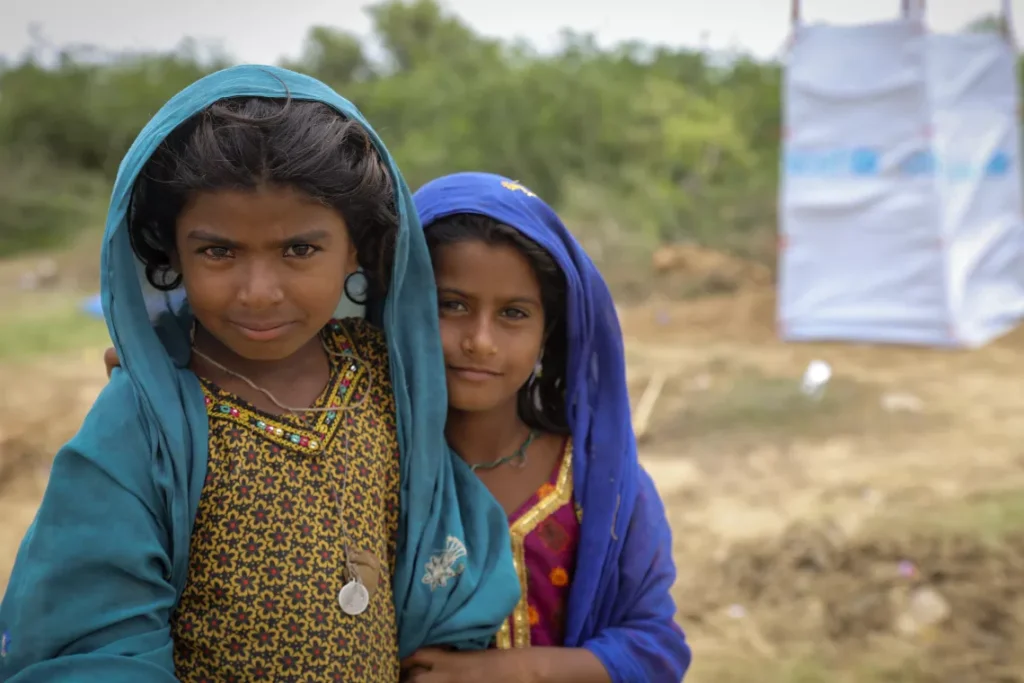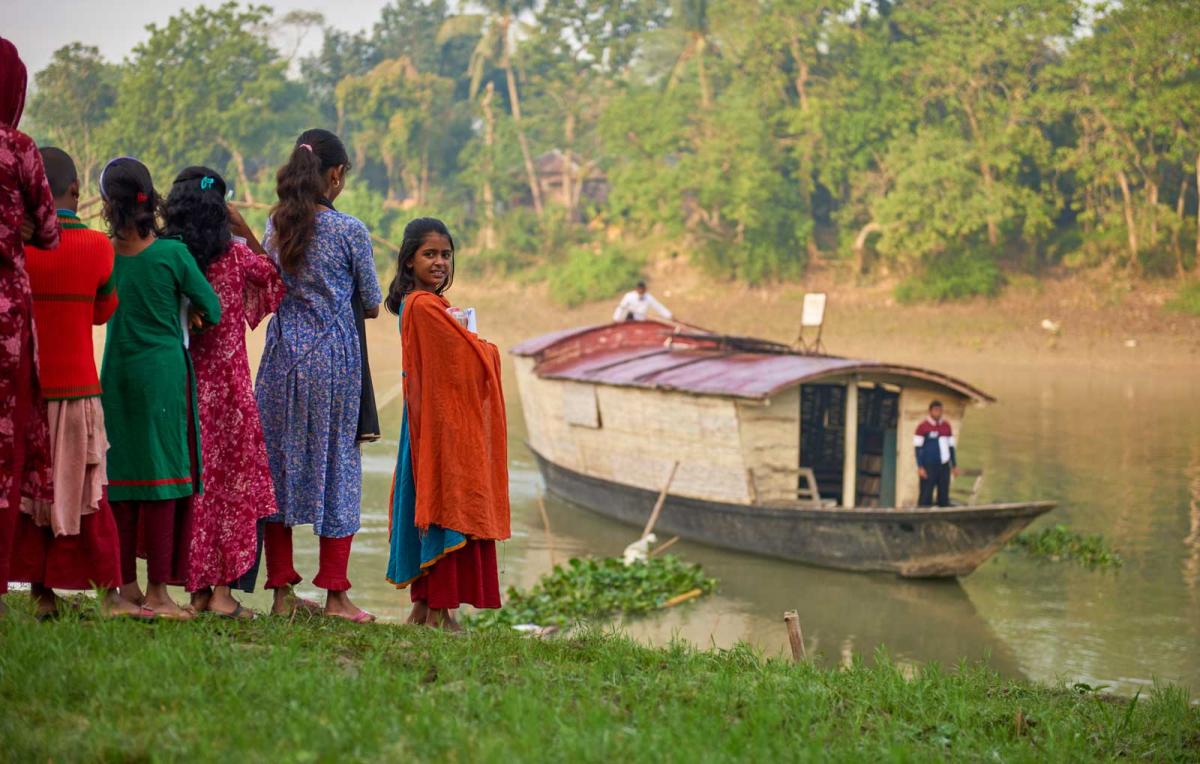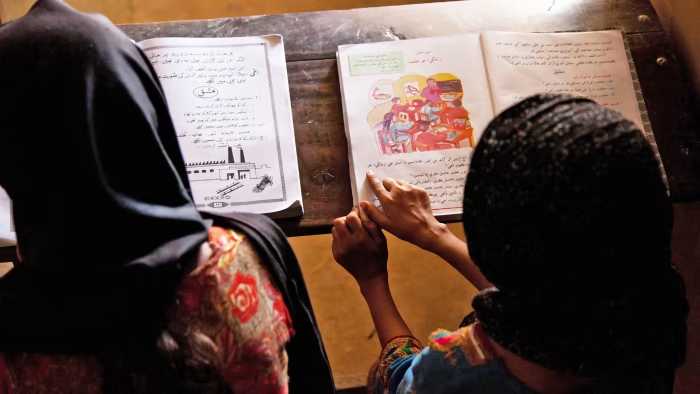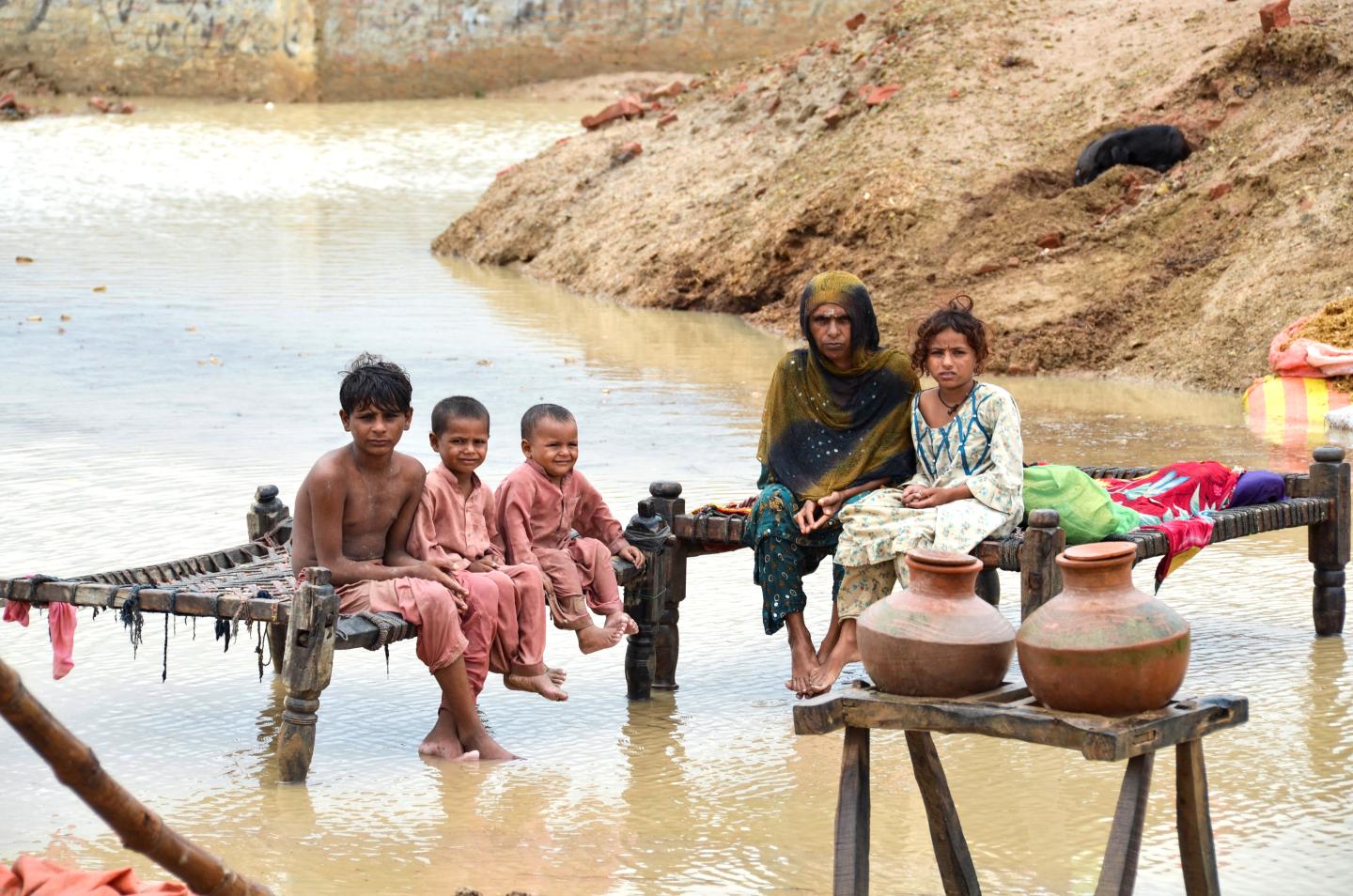
Climate doesn’t knock. It barges in, soaking textbooks, swallowing schoolyards, and silencing the dreams of girls who stop going to school. In the floodplains of India, Pakistan, and Nigeria, education is the first thing to drown. When rivers rise, schools disappear. But the water is only the beginning.
Girls bleed without access to pads or private toilets. Classrooms become shelters where hygiene goes to die. Menstruation, already whispered about, becomes a monthly exile.
Then there’s the walk miles of unstable, muddy roads, sometimes chest-deep in water, often unsafe. When a school collapses or a girl is followed on the way there, families decide it’s better if she just stays home.
And if home is flooded too? Then she’s married off. Or sent to earn. Because idle daughters, they say, are dangerous, and education, somehow, is optional. While the world calculates climate damage in GDP, what’s harder to measure are the futures lost. The erased girls. The silence in classrooms that used to echo with their questions.
 In every climate emergency, a girl’s future is quietly rewritten. ( Picture taken from worldschildrensprizes.org)
In every climate emergency, a girl’s future is quietly rewritten. ( Picture taken from worldschildrensprizes.org)
The Flood Arrives. The School Disappears.
Every year, the floodwaters arrive like clockwork. The land drowns. Roads vanish. Cattle float. And then, quietly, the girls who stop going to school increase in number.
Schools are the first to go under. They are often the weakest buildings in rural areas, made of bamboo, mud, or tin. They collapse quickly and are the last to be rebuilt. When classes resume, some boys return. Many girls don’t.
For families with little left, sending girls back to school isn’t always a priority. Survival comes first. Education becomes a luxury.
 Beyond the headlines and heatwaves, girls are losing access to education, safety, and choice (amazonnews.org)
Beyond the headlines and heatwaves, girls are losing access to education, safety, and choice (amazonnews.org)
When Menstruation Becomes a Monthly Dropout
Menstruation should be private. But in these villages, it’s loud in its consequences.
Imagine being 13, on your period, in a school that has no toilets, no soap, no bins. Now imagine that school has been flooded and turned into a relief shelter. The floors are wet. The toilets overflow. There is no place to change, clean, or simply hide. So, some girls stop going to school during their period. Eventually, those few days become many. Then it becomes permanent.
In cultures where menstruation is taboo, missing school during “those days” is treated like nothing. But to the girls who stop going to school, it’s everything. It’s the beginning of the end.
Education Isn’t Built on Bamboo
In climate-vulnerable zones, schools are built like afterthoughts. Makeshift. Fragile. Temporary. When the flood comes, they fall apart like matchsticks.
But even when they don’t, the danger remains. Walls crack. Floors sink. Teachers don’t show up. Some students sit on bricks. Others stand outside in slush. For boys, it’s tolerable. For girls, it’s not safe. Parents hesitate to send their daughters into ruined spaces, especially if male teachers are around or the toilets have no doors. Fear, not laziness, keeps them home.
Education for girls can’t be a bamboo hut. It has to be stronger than the storm
The Gender Gap Floats Higher
Floods don’t discriminate. But recovery often does.
In most post-disaster aid plans, rebuilding male livelihoods comes first. Fishing nets. Farm tools. Boats. Rarely is education discussed, let alone girls’ education.
And so, girls who stop going to school become invisible. Their absence isn’t tracked. Their dreams aren’t funded. No one asks, “Where did they go?”They don’t appear in climate debates, policy meetings, or budget sheets. They are the ghost data of our warming planet, always there, never seen.
 A future lost to rising waters, unspoken policies, and silence in suits.
A future lost to rising waters, unspoken policies, and silence in suits.
What Could Bring Her Back
Hope isn’t impossible, it’s just underfunded.
To bring back the girls who stop going to school, we need climate-proof schools: concrete buildings on stilts, raised toilets, solar lights, and drainage. We need period dignity—clean toilets, pads, and privacy. We need school transport, female teachers, and community trust. But mostly, we need people to care. Genuinely. Loudly. And not just on International Girl Child Day.
Because bringing her back isn’t just good policy. It’s poetry. It’s justice.
Let’s Not Call It a Dropout
A dropout sounds like a choice. But these girls didn’t choose to stop. They were chosen against. The floods came. The pads were missing. The road was unsafe. The classroom collapsed. And no one came looking for her. So let’s call it what it is, a system failure. A silence that has gone on too long.
Because the girls who stop going to school didn’t fail us. We failed them.
So here’s a question for all the climate conservators, the policymakers in polished suits, the researchers with prestigious grants, the panelists on global stages, the NGOs drafting shiny reports, and the corporations pledging carbon neutrality by 2050.
For every summit, every declaration, every applause line you deliver, next time a girl stops going to school, who do we blame?
The floods, or the fragile bamboo classrooms?Her period, or your policies that forgot she bleeds?The road she didn’t walk, or the fact that no one made it safe?
Because while you sip filtered water and speak of resilience in air-conditioned halls, she’s learning to spell ‘sacrifice’ in a language you’ll never teach. So tell us, when you tally your climate wins on polished podiums, do you count the girls who never came back to class?
Or are their futures too small to fit into your presentations?
If this made you pause, there’s more where that came from. Stay with The World Times for stories that don’t stay silent.



